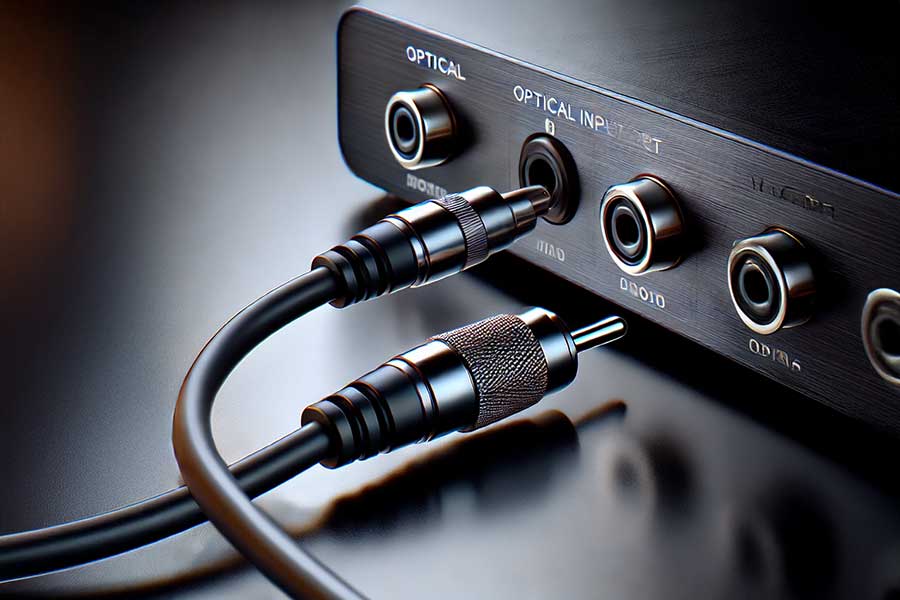
While audio technologies are constantly evolving, the methods of transmitting audio signals have also changed dramatically. Traditional copper cables are being replaced by optical cables in some cases. So, what are optical audio cables, how do they work, how are they different from other cables, and what advantages and disadvantages do they have? You will find the answers to these questions in this text carefully prepared by Ülkü Kablo.
What is an Optical Audio Cable?
An optical audio cable is a type of connection that transmits digital audio signals through light. Because it uses light instead of electrical signals, it is not affected by electromagnetic interference and provides a cleaner sound transmission. It is also often referred to as TOSLINK (Toshiba Link) because this technology was first developed by Toshiba.
How Do Optical Cables Work?
Optical cables consist of thin fiber optic wires. These wires transmit light signals from one end to the other. The audio signal is converted into a light signal by a transmitter and transmitted along the fiber optic cable. On the receiving side, this light signal is converted back into a digital audio signal and transferred to the audio device.
Differences of Optical Cables from Other Cables
Optical cables have some key differences, especially compared to copper cables (RCA, coaxial, etc.):
- Signal Transmission Method: Optical cables use light, while copper cables use electrical signals. This ensures that the optical cables are not affected by electromagnetic interference.
- Interference Immunity: Electromagnetic interference can adversely affect sound quality in copper cables. Optical cables, on the other hand, provide a cleaner and clearer sound transmission as they are not affected by interference.
- Bandwidth: Optical cables typically have high bandwidth, which means they can support high-resolution audio formats.
- Distance: Optical cables can be used over longer distances without signal loss. Copper cables begin to lose signal after a certain distance.
- Physical Sensitivity : Optical cables are more sensitive than copper cables. In the event of bending or breakage, their performance may be adversely affected.
Advantages of Optical Cables
- Not Affected by Interference: The biggest advantage is that it is not affected by electromagnetic interference. This is especially important in environments with a high volume of electrical cables and other electronic devices.
- High Sound Quality: Provides a cleaner and clearer sound transmission.
- Long Distance Transmission: It can be used over longer distances without signal loss.
- Electrical Insulation: Because optical cables are electrically insulating, they eliminate noise caused by grounding issues.
Disadvantages of Optical Cables
- Physical Sensitivity: They are more susceptible to bending, breaking, or crushing. Therefore, they should be used with caution.
- Higher Cost: They are usually a bit more expensive than copper cables.
- One-Way Transmission: Optical cables provide one-way transmission. Therefore, it is important that they are installed in the right direction.
- Limited Bandwidth (In Some Cases): Although they are usually high bandwidth, other types of connections, such as HDMI, may be more suitable for very high-resolution audio formats. Especially for high-bitrate multi-channel audio formats, HDMI is a better option.
In Which Devices Are Optical Cables Used?
Optical cables are often used in the following devices:
- Home theaters
- Televisions
- Game consoles
- Audio receivers (AV receiver)
- Blu-ray players
- Computers (some sound cards)
Result
Optical audio cables are an excellent option, especially when there are interference issues or when audio transmission over long distances is required. They offer a clean and clear audio experience. However, their physical sensitivity and cost should also be considered. You can use this information to choose the type of cable that best suits your needs and budget. As Ülkü Kablo, we are always with you with our optical cable solutions.
